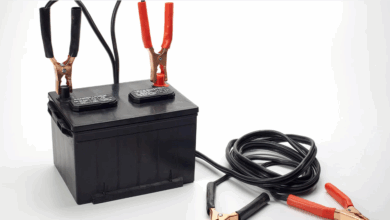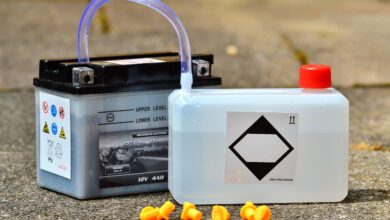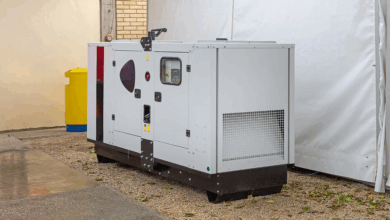Top 5 Small Generators for Home Backup in 2025
Stay Powered Up: The Top 5 Small Generators for Home Backup in 2025
Power outages are becoming increasingly common, whether due to extreme weather, grid strain, or unforeseen incidents. While whole-house standby generators offer seamless power, they come with a significant price tag and require professional installation. For many homeowners, a more practical and affordable solution is a small, portable generator.
Small generators are ideal for powering essential appliances like refrigerators, lights, phone chargers, and maybe a small TV or fan during an outage. They are typically more budget-friendly, easier to store, and portable enough to take camping or to a job site. In 2025, the market offers a fantastic range of compact yet powerful options, many utilizing quiet inverter technology.
Choosing the right small generator requires considering your specific needs: what appliances you want to power, your budget, noise tolerance, and how easily you need to move it. To help you navigate the options, here are five top small generators worth considering for home backup in 2025:
What to Look for in a Small Generator for Home Backup
Before diving into the top picks, here’s a quick rundown of key factors to consider:
-
- Wattage: Generators have two wattage ratings: Starting (Peak) watts (a brief surge needed to start motors) and Running (Continuous) watts (what it can sustain). Calculate the running watts of the appliances you need to power simultaneously, then add the highest starting wattage of any single appliance. This gives you a minimum requirement. Small generators typically range from 1600 to 3500 running watts.
-
- Inverter vs. Conventional: Inverter generators produce clean, stable power suitable for sensitive electronics (laptops, TVs). They are also generally quieter and more fuel-efficient. Conventional generators are often louder and produce “dirtier” power, best suited for basic tools and non-sensitive items. For home backup powering electronics, an inverter is usually preferred.
-
- Fuel Type: Most small generators run on gasoline. Some offer dual fuel (gasoline and propane), which provides flexibility and longer storage life for propane.
-
- Noise Level: Measured in decibels (dB). A lower number is quieter. Inverter generators are significantly quieter than conventional ones, often operating in the 50-60 dB range (like normal conversation). Conventional can be 70 dB or higher (like a vacuum cleaner).
-
- Portability: Weight and the presence of handles or wheels are crucial if you need to move it frequently. Small generators are generally lighter (under 60-80 lbs).
-
- Outlets: Ensure the generator has the types and number of outlets you need (standard 120V household outlets, possibly 30A RV outlets, USB ports).
-
- Features: Electric start, parallel capability (linking two generators for more power), fuel gauges, low-oil shutoff, and surge protection are desirable features.
Now, let’s look at some leading contenders in 2025:
Top 5 Small Generators for Home Backup in 2025
While prices and specific models can fluctuate, these brands and types consistently perform well in the small generator category:
-
- Honda EU2200i Inverter Generator
-
- Description: Often considered the gold standard for quiet, reliable, and efficient portable power. It’s an inverter generator known for its legendary durability and clean power output.
-
- Key Specs: 2200 Peak Watts, 1800 Running Watts. Runs on gasoline. Noise level as low as 48 dB. Weighs around 46 lbs. Run time up to 8.1 hours on 0.95 gallons at 1/4 load.
-
- Pros: Exceptionally quiet operation; incredibly reliable and durable engine; produces very clean power for sensitive electronics; lightweight and highly portable; excellent fuel efficiency; parallel capability.
-
- Why it’s Top 5: Despite the price, its unparalleled reliability, quietness, and fuel efficiency make it a favorite for those who demand the best and use it frequently.
-
- Honda EU2200i Inverter Generator
-
- Generac GP2200i Inverter Generator
-
- Description: Generac is a well-known name in home backup power, and their GP2200i offers a more budget-friendly entry into the quiet inverter generator market without sacrificing too many essential features.
-
- Key Specs: 2200 Peak Watts, 1700 Running Watts. Runs on gasoline. Noise level around 53 dB. Weighs around 46 lbs. Run time up to 10.5 hours on 1.2 gallons at 1/4 load.
-
- Cons: Build quality may not feel quite as robust as the premium brands; customer service reputation can vary; slightly lower running wattage than the top two picks.
-
- Why it’s Top 5: Offers an excellent balance of price, performance, and features, making quiet inverter power accessible to more homeowners looking for reliable backup for essential items.
-
- Generac GP2200i Inverter Generator
-
- Champion 2000-Watt Dual Fuel Inverter Generator (Model 100402 or similar)
-
- Description: Champion is known for offering innovative features and good value. This specific model stands out for its dual-fuel capability in a small, portable inverter package.
-
- Pros: Highly versatile dual-fuel capability; relatively quiet inverter operation; produces clean power; competitive price point; lightweight and portable; impressive run time on propane; parallel ready.
-
- Champion 2000-Watt Dual Fuel Inverter Generator (Model 100402 or similar)
-
- WEN 56203i/56200iV Inverter Generator (2000-watt class)
-
- Description: WEN provides entry-level, affordable inverter generators that punch above their weight in performance for the price. They are popular for casual use and budget-conscious buyers.
-
- Key Specs: 2000 Peak Watts, 1700 Running Watts. Runs on gasoline. Noise level as low as 51 dB. Weighs around 39 lbs. Run time up to 9.4 hours on 1 gallon at 1/4 load.
-
- Pros: Very affordable price point; surprisingly quiet operation for the cost; lightweight and extremely portable; produces clean inverter power suitable for electronics; decent run time; often includes USB ports; parallel ready.
-
- Why it’s Top 5: Provides an excellent budget-friendly option for homeowners who need occasional backup power. It delivers quiet, clean inverter power at a significantly lower cost, making essential backup more accessible.
-
- WEN 56203i/56200iV Inverter Generator (2000-watt class)
FAQs About Small Generators for Home Backup
-
- How much power (wattage) do I really need for home backup?
It depends on what you want to power. A small generator (1600-2200 running watts) is typically enough for a refrigerator, some lights, phone charging, and maybe a fan or small appliance. If you want to run a window AC unit or multiple larger items, you’ll need to carefully add up the running watts and check starting watt needs. It’s always better to have a little more wattage than you think you need.
- How much power (wattage) do I really need for home backup?
-
- Where should I operate my generator?
ALWAYS outdoors and far away from windows, doors, and vents. Generators produce carbon monoxide (CO), an invisible, odorless, and deadly gas. Never run a generator in a garage, basement, shed, or any enclosed or partially enclosed space.
- Where should I operate my generator?
-
- Can I plug the generator directly into my house’s wall outlets?
NO! This is extremely dangerous (known as backfeeding). It can send power back through utility lines, potentially electrocuting lineworkers, and can also damage your generator and home wiring. The safe way to connect a generator to your home’s electrical system is via a properly installed transfer switch by a qualified electrician. Otherwise, only plug appliances directly into the generator’s outlets using heavy-duty outdoor-rated extension cords.
- Can I plug the generator directly into my house’s wall outlets?
-
- What’s the difference between inverter and conventional generators?
Inverter generators produce cleaner, more stable power (pure sine wave) which is safe for sensitive electronics. They are also typically quieter and more fuel-efficient than conventional generators, which produce “dirtier” power (modified or square wave) that can harm electronics and are much louder.
- What’s the difference between inverter and conventional generators?
-
- How do I maintain a small generator?
Follow the owner’s manual. Basic maintenance usually includes checking and changing the oil regularly, checking/cleaning the air filter, and properly storing it (especially if using gasoline, which can degrade – consider using a fuel stabilizer). Run it periodically (e.g., every few months) for 20-30 minutes under a small load to keep the engine lubricated and fuel circulating.
- How do I maintain a small generator?
Conclusion
Investing in a small generator is a smart move for preparing for power outages in 2025. These portable powerhouses can keep your essentials running, providing comfort and security when the grid goes down. The top models from Honda, Yamaha, Generac, Champion, and WEN offer a range of options catering to different needs and budgets, from premium reliability and quietness to versatile dual-fuel capability and excellent value.
When making your choice, carefully assess your power requirements, consider noise levels, portability, and essential features like fuel type and outlets. Remember to prioritize safety above all else – always operate generators outdoors and take precautions against carbon monoxide poisoning. With the right small generator, you can face unexpected power interruptions with confidence, ensuring your home remains partially powered until the lights come back on.




![How to Bypass CO Sensor on Generator – [4-Step Safety Guide]](https://www.generator411.com/wp-content/uploads/2025/08/co-sensor-on-generator-390x220.png)